Photographer’s Letters Offer Firsthand Account Of 1946 Corregidor Muster
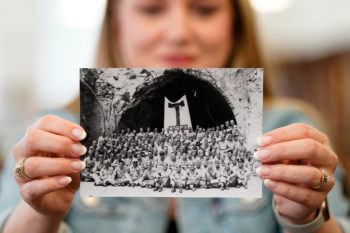
On a faded sheet of paper dated April 22, 1946, a line drawing of a saluting cadet is stamped in the upper left corner above the words “tall talk from ted.” Below, James “Ted” Danklefs ’43’s neat cursive writing describes the events of the previous afternoon, which he spent on the small island of Corregidor in the Philippines.
“Dear Mom and Pop, Well the ‘Muster’ is over and it was a very nice occasion,” he wrote, recalling how “about 135 of us plus the Manila International Male Chorus and a few miscellaneous visitors” had taken boats to the island to remember the Aggies who had died defending it a few years earlier during World War II. “I’ve got lots of pictures but just of Malinta Tunnel and there close by.”
Of the many photos Danklefs took at the 1946 Aggie Muster on Corregidor, one in particular would go on to become one of the most famous images in Texas A&M history — and one of the most widely recognizable depictions of this long-standing Aggie tradition.
Danklefs kept an exhaustive record of his time in the Army through hundreds of letters and photos he mailed to his parents. Back in Texas, his mother saved everything, maintaining a meticulous archive that would later be passed on to his wife, Iris Danklefs.
When she died in 2019, Danklefs’ children opened a box in one of her closets and rediscovered scrapbooks filled with these communications, including a variety of letters discussing the 1946 Corregidor Muster and Danklefs’ efforts to document the event.
“When we did a sale of her home and cleaned out everything, we found the scrapbooks and really began delving into what was in there,” said Danklefs’ daughter, Donna Kent ’79.
The family had already donated a box of these records in 2007 to Texas A&M’s Cushing Memorial Library and Archives. But these latest discoveries in 2019 have prompted a renewed effort to catalog and analyze Danklefs’ remaining photos and letters, Kent said.
The family’s archive helps add color and context to a tale that is now deeply enshrined in Aggie lore.
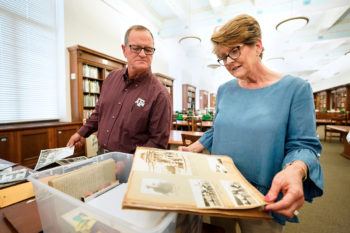
Capturing The Historic Moment
In the famous photo Danklefs captured on Corregidor, a group of uniformed men, some holding Texas flags, huddle together at the mouth of a tunnel with a large “block T” flag unfurled behind them. As a child, Holly Reedy ’11 would often look up at that black-and-white photo, which hung on the wall above the television in her grandmother’s kitchen.
Danklefs died before Reedy was born. So for her, looking at the photo was a way to connect with the grandfather she never had a chance to know. Before learning of the image’s significance, she simply knew that “Grandpa Danklefs took it.”
“Every holiday, every birthday, it was kind of like he was almost there with us because we saw it at every special occasion,” Reedy said. “I don’t think I really knew the magnitude, though, of what that picture meant until I was a student at A&M.”
In 1942, four years before the now-famous gathering was held and the iconic photo was captured, Corregidor was under siege by Japanese forces. American and Filipino soldiers fought hard to maintain the Allies’ last remaining stronghold in the Philippines and deny Japan full access to Manila Bay. The heavily fortified Malinta Tunnel served as a base of operations, offering much-needed refuge from relentless barrages of artillery.
On April 21 of that year — long observed as a day for Aggies to come together and celebrate the anniversary of the Battle of San Jacinto — Brig. Gen. George F. Moore ’08 tasked Maj. Tom Dooley ’35 with putting together a list of the Aggies on the island. There were 27.
Corregidor fell to Japanese forces just two weeks later, but the story of the 1942 roll call — which was quickly embellished by some creative reporters — became a source of inspiration for a war-weary United States, solidifying the tradition of Muster in the popular imagination for years to come.
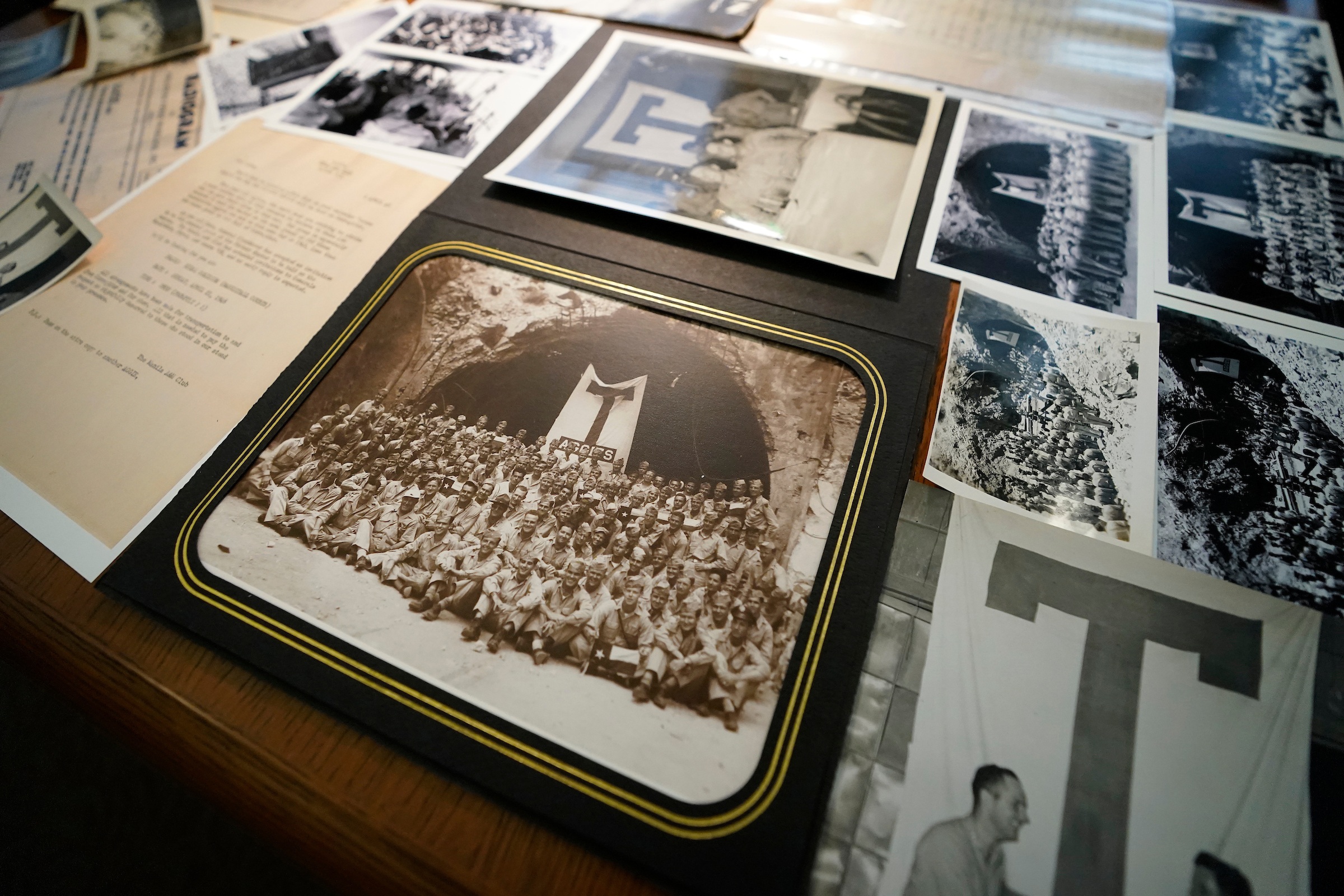
“Every holiday, every birthday, it was kind of like he was almost there with us because we saw it at every special occasion. I don’t think I really knew the magnitude, though, of what that picture meant until I was a student at A&M.”
By the time 1946 rolled around, the war was over, and Japan had pulled out of the Philippines for good. That March, Danklefs and others began discussing the idea of a second Aggie Muster on Corregidor — a celebration in honor of those who had defended the island in ’42.
Early ideas for the gathering are detailed in one of the letters that Kent, Danklefs’ daughter, came across in the family archive.
“In one letter, it says, ‘We decided to do it. It’s gonna be one heck of a task, but we’re up to it,’” she said.
A letter distributed by the Manila A&M Club quickly spread the word: “You’d best be circling APRIL 21st on your calendar ‘cause that’s the day the VICTORY MUSTER will be held on Corregidor.” A postscript at the bottom instructed the reader to “Pass on the extra copy to another AGGIE.”
According to Kent, Danklefs himself sent out invitations to high-ranking officers including Brig. Gen. Moore and Lt. Gen. Wilhelm Styer. He even sent one to the allied commander, Douglas MacArthur, for good measure.
MacArthur’s reply, which would ultimately be read at the ’46 Muster, is now the stuff of Aggie legend. He instructed the men to answer the roll call “in clear and firm voice” for those sons of Texas A&M who had died on Corregidor in ’42.
The event took a lot of planning to pull off, and as the letters reveal, there was no shortage of stumbling blocks. But in the end, the ’46 Muster was a success, with more than 100 Aggies singing songs, socializing, and standing in remembrance for those who had come before.
Throughout the festivities, Danklefs snapped photos on his camera, including several shots of the attendees gathered at the mouth of the Malinta Tunnel. Lucky for the intrepid photographer, his camera was equipped with a timer, allowing him to join his fellow servicemen in the photo that would become famous decades later.
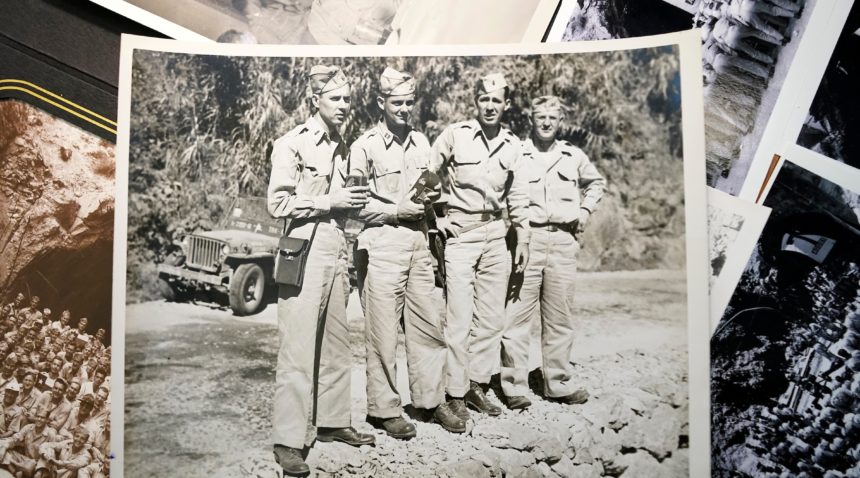
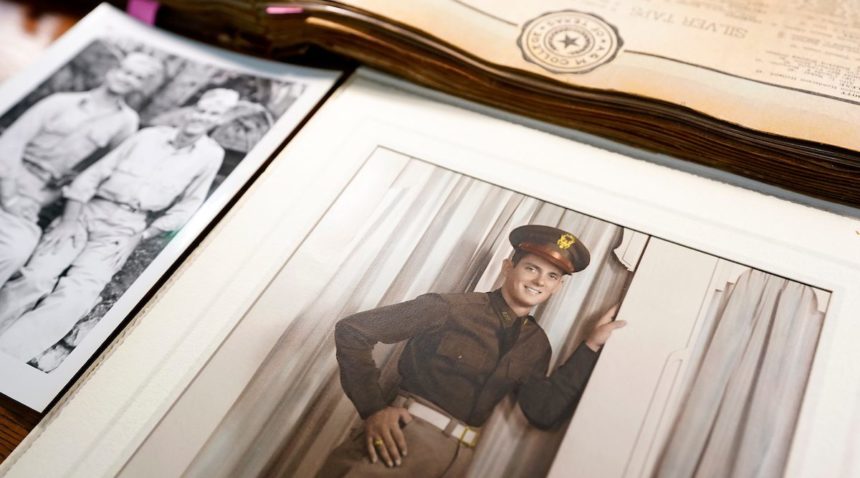
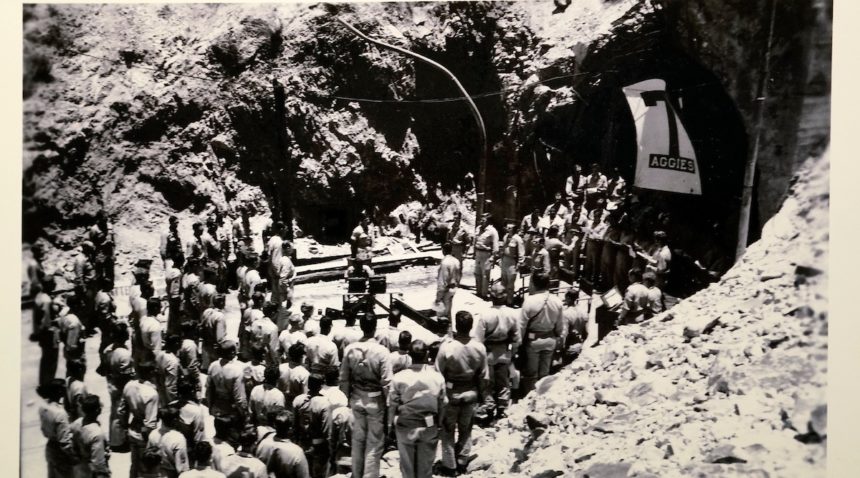
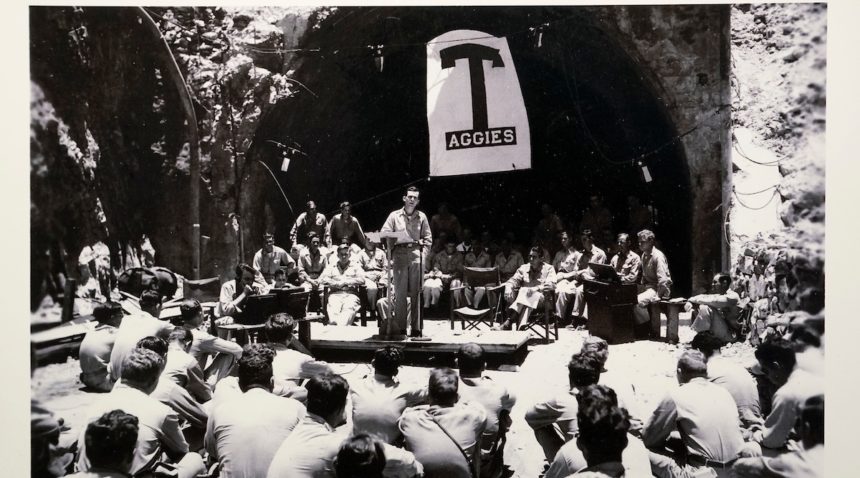
A Lasting Reminder
After the event, Danklefs wanted to make sure that no one would forget the day they spent on Corregidor. Kent said her grandfather and some buddies quickly retreated to a self-made dark room to make copies of the group photograph for every Aggie who was there.
It would take some time for the photo to be elevated from a personal keepsake to one of the most well-known depictions of Aggie Muster.
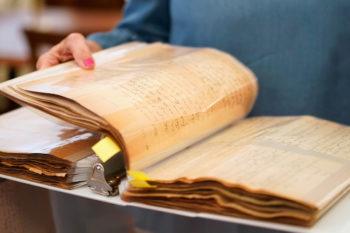
According to Danklefs’ children, that process probably started when, shortly before his death, Danklefs shared the picture with author and historian John A. Adams Jr. ‘ 73, who included it in his 1979 book “We are the Aggies.” Many years later, the Danklefs family would see just how iconic Ted’s photo had become.
“It was probably not until sometime in the 2000s, I was at an A&M football game and then, ‘Hey, there’s my dad’s picture up on the Jumbotron,’” said Ken Danklefs ’82. “It started hitting home then.”
Today, the photo and the story behind it remain key pieces of A&M lore, appearing in numerous articles, videos and displays on the history and significance of Aggie Muster. An exhibit in The Association of Former Students’ Clayton W. Williams Jr. Alumni Center features a large printing of the photo and a display case housing the Aggie rings of numerous Corregidor Muster attendees.
Ken Danklefs said that if his father could see what has become of his photo, he would probably be hesitant to take credit — but happy to see that the story of the 1946 Corregidor Muster continues to live on to this day.
“I think it was something that he enjoyed doing,” Ken Danklefs said. “He enjoyed the early stages of that Aggie network, being overseas with other Aggies. I think it was very special to him.”
For the Aggies in the Danklefs family — there are 12, in fact — the photo of those servicemen gathered in front of the Malinta Tunnel serves as a lasting reminder of what makes Texas A&M so special.
“There’s so many cousins, and my mom, and my uncle, who all attended A&M,” Reedy said. “It’s a remembrance of our Aggie core values and how those gentlemen really took them to heart.”
Media contact: Luke Henkhaus, luke.henkhaus@tamu.edu



